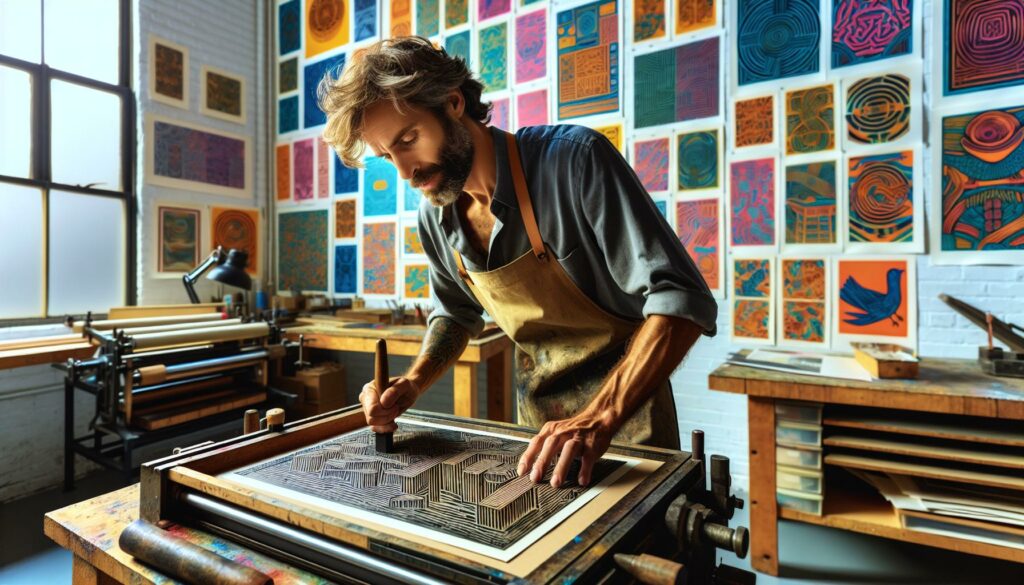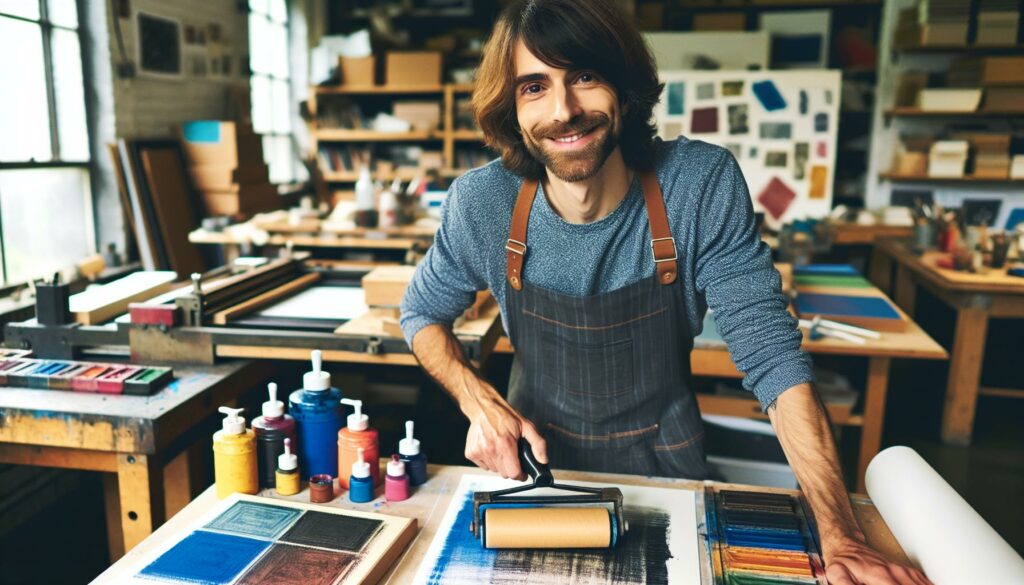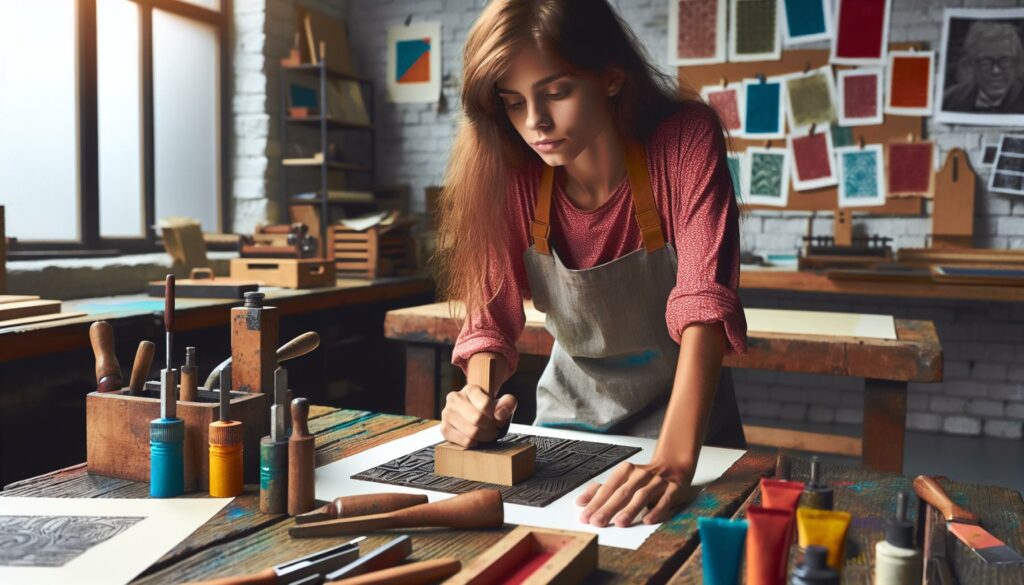Printmaking artwork captivates me with its unique blend of creativity and technique. Each piece tells a story through layers of ink and texture, offering a glimpse into the artist’s vision. From traditional woodblock prints to modern screen printing, the diversity in methods and styles is truly inspiring.
As I delve into the world of printmaking, I discover how this age-old craft continues to evolve, pushing boundaries and embracing new technologies. Whether you’re an artist looking to explore printmaking or an enthusiast eager to learn more, there’s so much to uncover. Join me on this journey to appreciate the artistry behind printmaking and its role in the contemporary art scene.
Key Takeaways
- Diverse Techniques: Printmaking encompasses various methods including relief, intaglio, lithography, and screen printing, each offering unique characteristics and aesthetic results.
- Artistic Expression: Printmaking serves as a powerful medium for artists to explore themes, push creative boundaries, and communicate narratives, blending traditional techniques with modern technology.
- Historical Significance: Influential printmakers like Albrecht Dürer and Pablo Picasso have shaped the evolution of art, with printmaking playing a crucial role in major artistic movements such as Expressionism and Pop Art.
- Process and Materials: The printmaking process involves careful selection of materials and precise steps—from design creation to inking and printing—ensuring high-quality artwork.
- Contemporary Innovations: Modern printmakers embrace digital tools and sustainable practices, allowing for innovative creations and collaborations that reflect current cultural trends and environmental consciousness.
- Engagement and Community: Printmaking fosters a dynamic community where artists connect through exhibitions and online platforms, deepening appreciation and audience engagement in the contemporary art scene.
Printmaking Artwork
Printmaking artwork encompasses a range of techniques that allow artists to create multiple copies of a single design. Artists utilize methods like relief, intaglio, lithography, and screen printing, each offering distinct characteristics and outcomes.
- Relief Printing: This technique involves carving a design onto a surface, such as wood or linoleum. The raised areas receive ink, while the carved-out sections remain blank. Block prints exemplify this method, showcasing bold textures and strong lines.
- Intaglio: This process entails incising designs into a surface, typically metal plates. After applying ink, the excess is wiped away, leaving ink only in the recesses. Methods like etching and engraving highlight fine details and delicate imagery.
- Lithography: Lithography relies on the principle of oil and water repulsion. Artists draw on a flat stone or metal plate with a grease-based medium. Ink adheres to the drawing but not the non-image areas, resulting in richly detailed prints.
- Screen Printing: This contemporary technique involves pushing ink through a mesh screen onto a substrate. It’s popular for its versatility, allowing artists to produce bright colors and layered designs on various materials.
Printmaking serves multiple artistic purposes. Artists often use it to explore themes and push creative boundaries. The process invites experimentation, combining techniques and materials to enhance artistic expression. Printmakers also engage with traditional and digital innovations, ensuring the craft’s relevance in today’s art world.
Printmaking artwork remains significant due to its ability to communicate narratives and evoke emotions. Each piece reflects the artist’s intent while inviting viewers to connect with its layered meanings.
Types of Printmaking Techniques
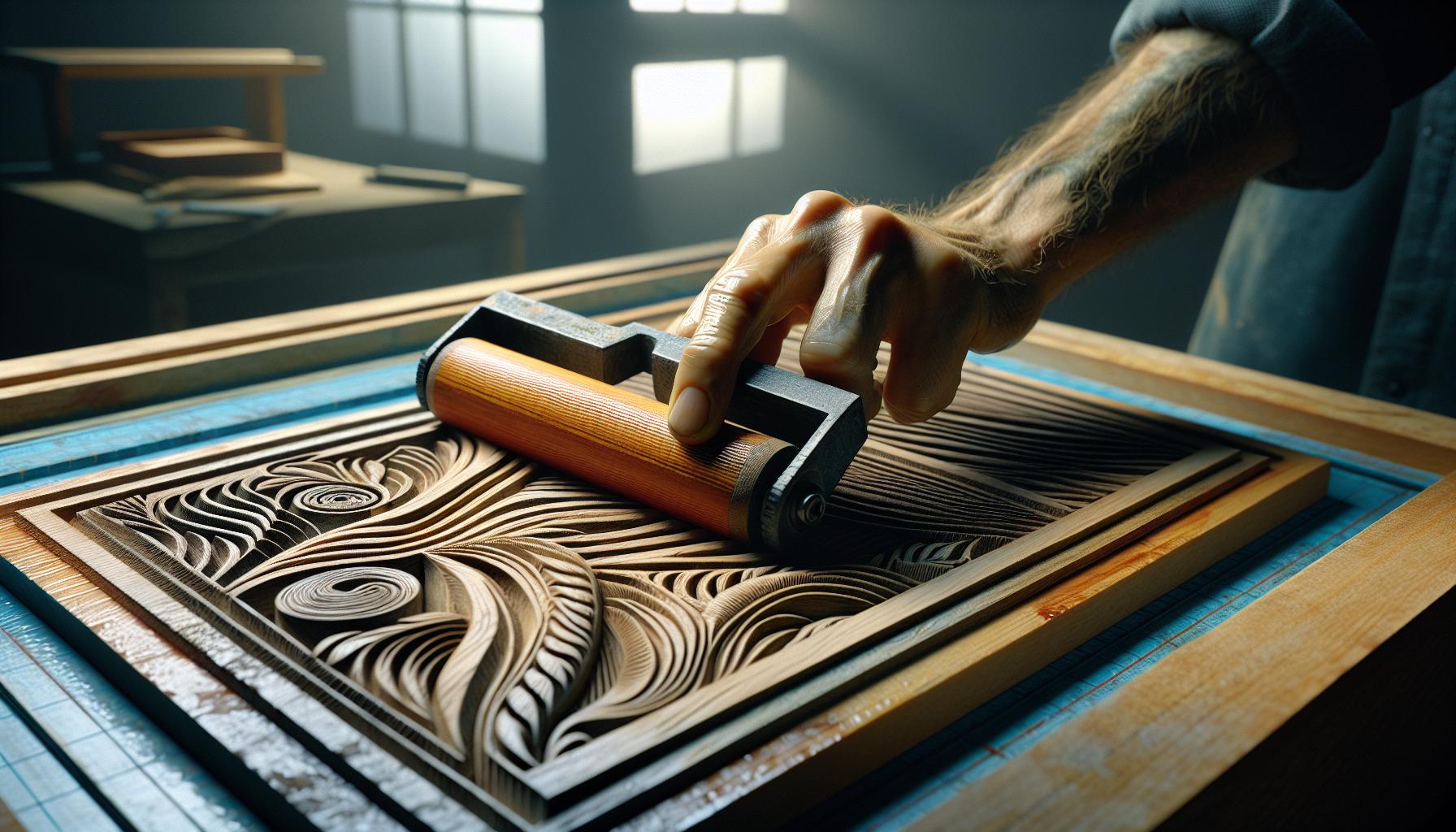
Printmaking techniques showcase a range of methods that artists use to create unique artwork. Each technique presents its own distinct characteristics and aesthetic qualities.
Relief Printing
Relief printing involves carving a design into a surface such as wood or linoleum. The raised areas of the surface hold ink, while the carved-out sections remain blank. Artists apply ink to the raised surfaces using rollers or brushes, then transfer the image to paper by pressing down on it. This method produces bold, graphic images, often characterized by strong contrasts. Popular relief printing techniques include woodcut, linocut, and letterpress.
Intaglio Printing
Intaglio printing entails incising designs into a metal plate, commonly copper or zinc. The incised areas hold ink, while the flat surface remains ink-free. Artists can use various tools, such as burins or etching needles, to carve intricate details. After inking the plate, they wipe the surface clean, leaving ink only in the incised lines. Pressure is then applied through a printing press to transfer the ink to paper. This technique is known for its detailed, fine-line work and depth, with popular methods including etching, engraving, and aquatint.
Lithography
Lithography uses the principle of oil and water repulsion to create prints. An artist draws an image with a greasy medium on a flat stone or metal plate. After treating the surface with a water-based solution, the artist applies ink. The ink adheres only to the greasy drawing, allowing for detailed and nuanced images. Lithography is versatile for producing editions with a wide variety of tones and textures, suitable for both artistic and commercial purposes.
Screen Printing
Screen printing involves forcing ink through a fine mesh screen onto a substrate, such as paper or fabric. This method allows for vibrant colors and sharp lines due to the ability to layer inks. Artists use stencils to create designs, placing them on or under the screen. When a squeegee applies pressure, the ink passes through the open areas of the stencil. Screen printing is widely used for creating posters, textiles, and any artwork requiring bold, graphic designs.
The Role of Printmaking in Art History
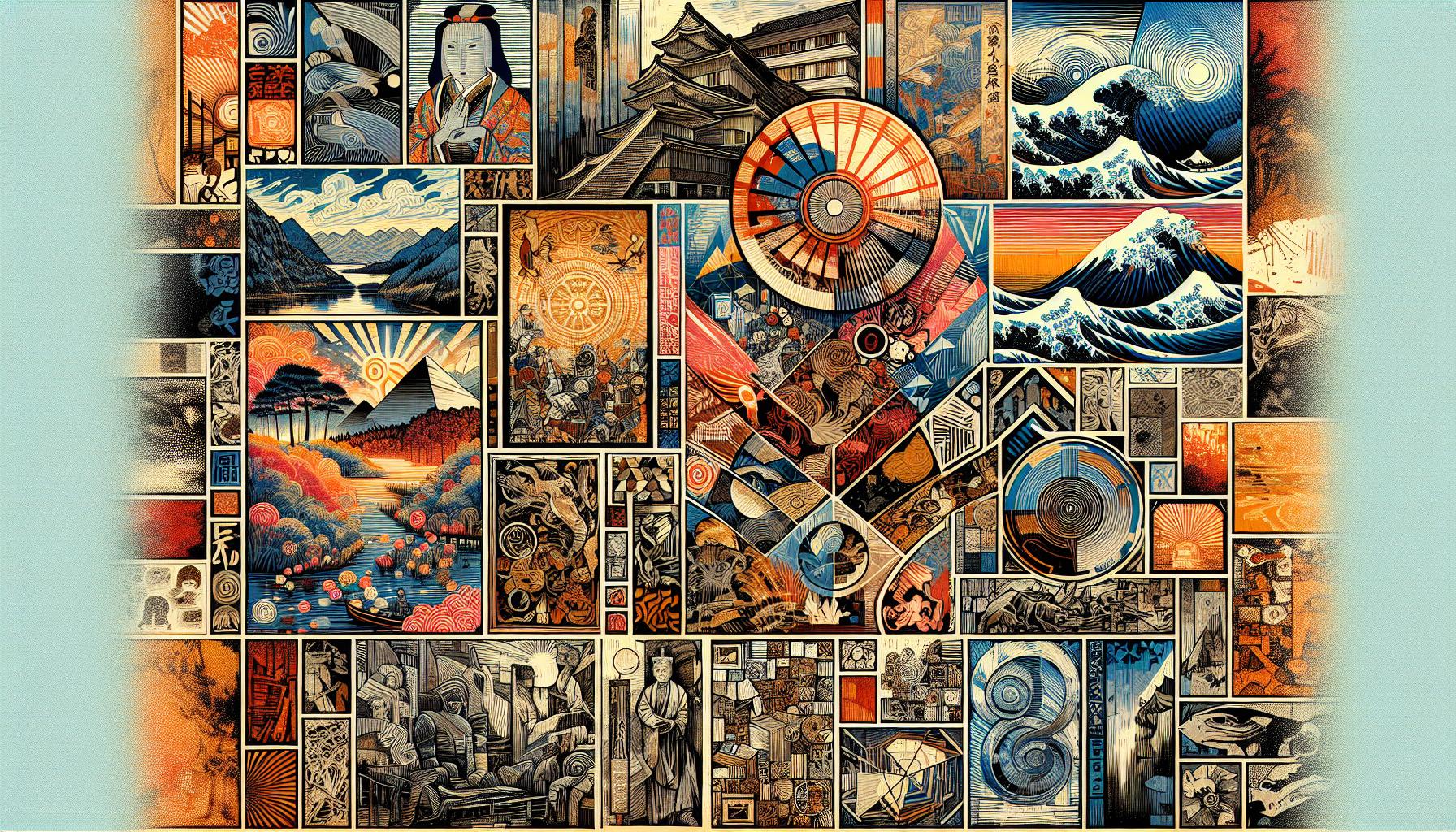
Printmaking plays a crucial role in the evolution of art, influencing styles, techniques, and movements throughout history. It provides artists with diverse avenues for expression and innovation.
Influential Printmakers
Many printmakers have left indelible marks on art history.
- Albrecht Dürer: A Renaissance master known for his detailed woodcuts and engravings, Dürer elevated printmaking to high art through his meticulous techniques.
- Hokusai: A pivotal figure in Japanese ukiyo-e printmaking, Hokusai’s vibrant landscapes and dynamic compositions introduced Western audiences to Eastern aesthetics.
- Francisco Goya: Goya’s series of etchings depicted social and political themes, influencing modern printmaking’s capacity for commentary and critique.
- Pablo Picasso: Picasso’s exploration of linocut and lithography pushed the boundaries of form and abstraction, exemplifying printmaking’s adaptability to modern styles.
Major Artistic Movements
Printmaking significantly impacted various artistic movements.
- Expressionism: Printmakers like Käthe Kollwitz captured intense emotions, employing bold lines and dramatic contrasts to convey their messages.
- Dadaism: This avant-garde movement utilized printmaking to challenge conventions, allowing artists to experiment with collage and ready-made objects.
- Surrealism: Artists such as Max Ernst used print techniques to create dream-like imagery, merging fantasy with reality and expanding the possibilities of visual storytelling.
- Pop Art: Figures like Andy Warhol integrated commercial imagery into printmaking, reflecting consumer culture and redefining the boundaries of fine art.
These influential printmakers and movements showcase printmaking’s integral role in shaping artistic landscapes, reinforcing its importance in the history of art.
The Process of Creating Printmaking Artwork

Creating printmaking artwork involves a careful selection of materials and a series of steps that require precision and skill. Each printmaking technique features unique methods, but some common elements unite the process.
Materials Used
I rely on specific materials tailored to each printmaking method. These materials include:
- Presses: Essential for transferring ink from the plate to the paper, these can be hand-operated or electric, depending on the scale and style of the work.
- Plates: Varieties include metal for intaglio, litho stones for lithography, and wood or linoleum for relief printing.
- Inks: Specialized inks ensure vivid colors and lasting impressions, with formulations designed for different types of printing techniques.
- Paper: High-quality, absorbent paper enhances the final appearance, with options such as Japanese washi or heavy cotton rag paper.
- Tools: I utilize various tools, including brayers, barens, and chisels, for inking, transferring, and carving.
Steps Involved
I follow several key steps to create printmaking artwork, regardless of the method chosen:
- Design Creation: I begin with a design, often sketching ideas to determine composition and elements.
- Preparation of Plates: I prepare the appropriate plate material by carving or treating its surface, depending on the desired technique.
- Inking: I apply ink to the plate using a brayer, ensuring an even distribution across the carved or treated surface.
- Printing: I position the inked plate on the paper and use a press or hand-pressure to transfer the ink, ensuring clarity and detail in the final image.
- Drying: After printing, I carefully peel back the paper and allow it to dry, ensuring that the print remains intact and vibrant.
- Editioning: I often create multiple copies, or editions, of a design, allowing for variations or adjustments in color and texture.
Each step requires attention to detail, resulting in artwork that captures the essence of my vision through printmaking techniques.
Contemporary Printmaking Practices
Contemporary printmaking practices showcase innovative techniques that blend tradition with modern technology. Artists often use digital tools alongside classic methods, expanding their creative possibilities. Techniques like digital printing, which focuses on direct image transfer to paper, provide new avenues for experimentation and visual storytelling.
Many artists incorporate mixed media in printmaking, combining print techniques with painting, drawing, or sculpture. This approach enhances the tactile quality of prints and allows for richer narrative layers. Printmakers often utilize alternative materials, such as unconventional papers or found objects, resulting in unique textures and effects that redefine print artwork.
Sustainability also plays a crucial role in contemporary practices. Artists prioritize eco-friendly materials and processes, producing works that resonate with environmental consciousness. Organic inks and recycled papers often feature in these innovative creations, reflecting a commitment to responsible art production.
Collaboration has become increasingly prevalent in the printmaking community. Artists work with printers and other creatives to push boundaries and explore new dimensions in art. This collaborative spirit fosters a dynamic exchange of ideas and techniques, enriching the artistic landscape.
Exhibitions and online platforms prominently feature contemporary printmaking, connecting artists with a global audience. Many utilize social media and digital galleries to showcase their work, enhancing visibility and fostering engagement with diverse audiences. The interaction between artists and viewers deepens appreciation for printmaking, highlighting its relevance in today’s art world.
Creativity and Storytelling
Printmaking is more than just a technique; it’s a vibrant expression of creativity and storytelling. I find it fascinating how each method offers a unique lens through which artists can communicate their ideas and emotions. The blend of traditional practices with modern technology opens up endless possibilities for innovation.
As I explore this captivating art form, I’m continually inspired by the rich history and the dynamic community that surrounds printmaking. Whether you’re an artist or simply an admirer, there’s so much to discover and appreciate in every print. Embracing this art form allows us to connect with the past while celebrating the future of artistic expression.

